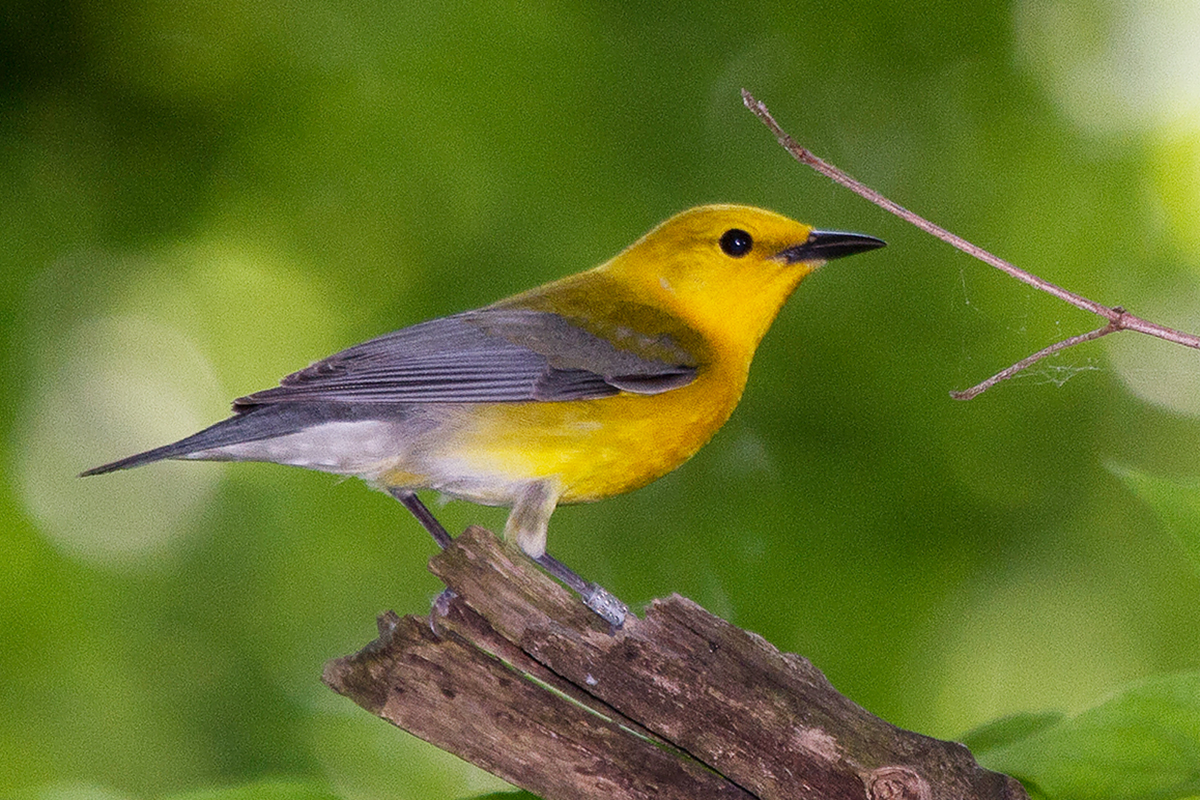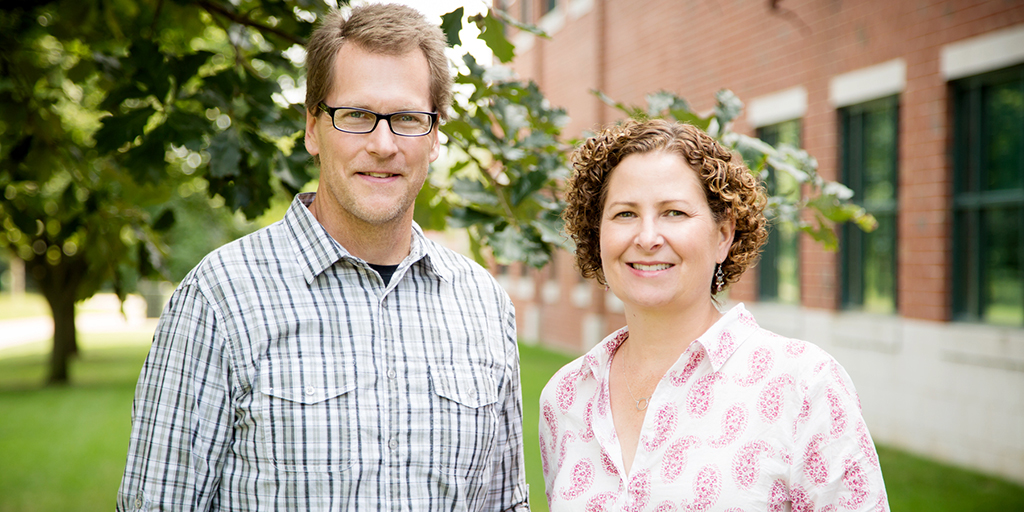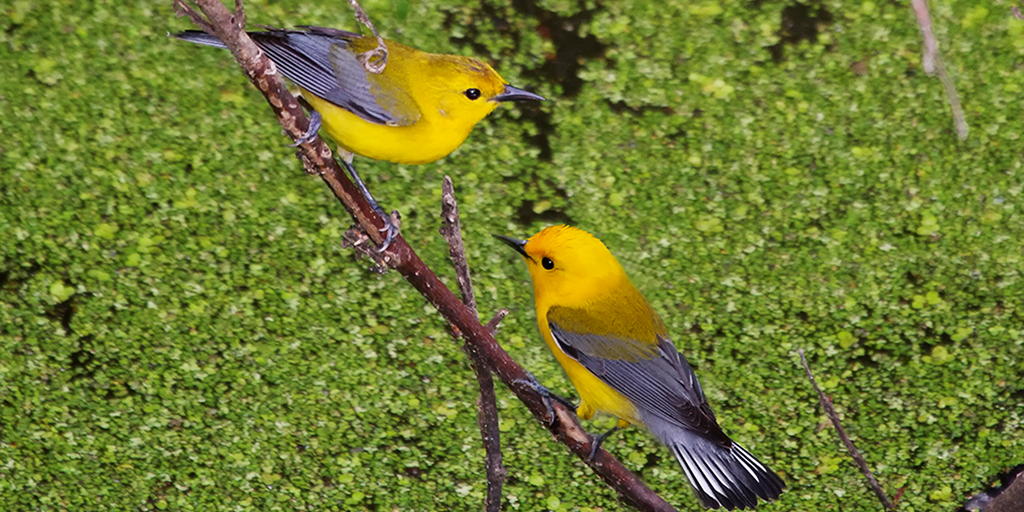
Female prothonotary warblers lay their eggs earlier in the breeding season when local April temperatures are warmer. A new study finds this benefits the birds by enabling them to sometimes fledge additional broods of nestlings.
Photo by Michael Jeffords and Sue Post*
CHAMPAIGN, Ill. — Climate change contributes to gradually warming Aprils in southern Illinois, and at least one migratory bird species, the prothonotary warbler, is taking advantage of the heat. A new study analyzing 20 years of data found that the warblers start their egg-laying in southern Illinois significantly earlier in warmer springs. This increases the chances that the birds can raise two broods of offspring during the nesting season, researchers found.
They report their findings in the journal Frontiers in Ecology and Evolution.
"Warmer springs in temperate regions of the planet can create a mismatch between when food is available to breeding birds and when their energy demands are highest – when they are feeding nestlings," said Illinois Natural History Survey avian ecologist Jeffrey Hoover, who conducted the study with INHS principal scientist Wendy Schelsky. If climate change diminishes insect populations at critical moments in the birds' nesting season, food shortages may cause some chicks and even adults to die. Other long-distance migratory birds suffer ill consequences from warmer springs on their breeding grounds.

Illinois Natural History Survey scientists Jeffrey Hoover and Wendy Schelsky conducted a 20-year study of nesting prothonotary warblers in southern Illinois.
Photo by L. Brian Stauffer
But this mismatch seems not to occur in prothonotary warblers, the researchers found.
In the Cache River watershed, where the study was conducted, the warblers nest in swamps and forested wetlands, which are abundant sources of insects throughout the spring and summer. The warblers eat caterpillars, flies, midges, spiders, mayflies and dragonflies. As long as it does not dry up, the wetland habitat provides a steady supply of food to sustain the birds.
"We studied populations of prothonotary warblers nesting in nest boxes in these areas from 1994-2013," Schelsky said. The researchers captured and color-banded the birds, studying 2,017 nesting female warblers in all. They visited the nests every three to five days from mid-April to early August, keeping track of when each bird laid its first egg and the birds' overall reproductive output for each nesting season.
They also compared local April temperature trends with those of the Annual Global Land Temperature Anomaly data, a federal record compiled by the National Oceanic and Atmospheric Administration. They found that local conditions reflected global temperature changes.

Prothonotary warblers migrate long distances and must adjust to local conditions when they arrive at their nesting sites.
Photo by Michael Jeffords and Sue Post*
When local temperatures were warmer in April, the birds tended to lay their first eggs earlier in the spring and, on average, produced a greater number of offspring over the course of the breeding season.
"It was exciting to see that the birds could be flexible and adjust their timing of breeding to be earlier in warmer years and benefit by doing so," Schelsky said. Starting earlier meant more of the birds could raise additional broods of offspring.
As the warming trend continues, conditions may change in ways that harm the birds' reproductive capacity, Hoover said.
"Even though these warblers currently produce more offspring in warmer years, continued global warming may eventually upset the balance between arrival dates, food resources and the commencement of nesting," he said. For example, warmer temperatures could cause local wetlands to dry up during the nesting season, cutting off the steady supply of insects the birds rely on to raise their young and increasing the exposure of nests to predators.
The INHS is a division of the Prairie Research Institute at the U. of I.






